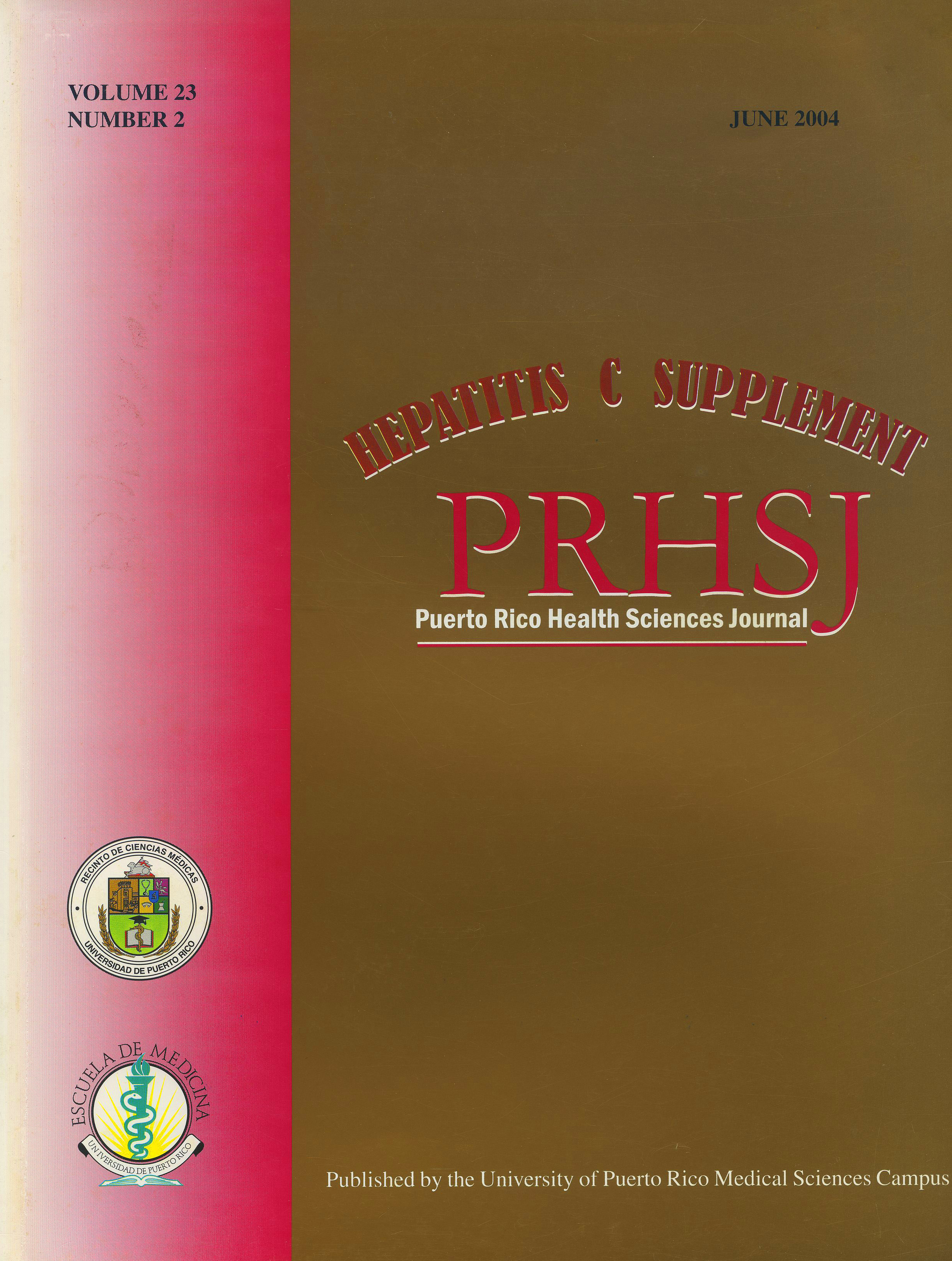Abstract
Objectives. This is the first study done in Puerto Rico to estimate the prevalence of hepatitis C virus (HCV) genotype distribution in patients with chronic infection and to determine the statistical association between the genotype and variables such as age, sex, HCV risk factors, and viral load. Methods. Chronic HCV infected patients diagnosed with ELISA, RIBA or PCR from 1990 to 2002 who were under follow up with members of the Puerto Rico Gastroenterological Association were asked to participate. Eligible patients were those without evidence of HIV or other viral hepatic infection; had no previous antiviral treatment or if previously treated, therapy ended at least six months prior to their participation in the study; had no history of organ transplant and were willing to participate. All study subjects completed a study questionnaire and had blood samples taken to determine HCV genotype and viral load. Results. 500 patients were recruited. Most of the study subjects were males (68%); 70% were 45 to 65 years old. The principal reported risk factors were: surgeries (75.5%), drug use (46.8%), sexual relationships with intravenous/intranasal drug users (30.3%), blood transfusions (30.2%), multiple sex partners (28.9%), tattoos (22.0%), needle accidents (12.7%), and sexual relationships with an HCV infected partner (9.0%). Most patients had multiple risks factors for infection, only 3.4% (17/500) reported a single risk factor whereas 2.0% (10/500) reported none. 33% of the patients were previously treated (non-responders or relapsers) while 67% were naïve. In general, 82% of the HCV patients had genotype 1, while 18% had non-1 genotypes. Among genotype 1 subtypes, genotype 1a (39.8 %) was more common than 1b (27%). The most common non-1 genotype was genotype 2 of which 2b represented 9.8% of the study population. Similar distribution was observed within the categories of the HCV risk factors, with the exception of those who reported sex with an infected partner (p=0.018), sex with multiple sexual partners (p=0.049) and IVDU (p=0.006). For patients in which the viral load was 2 million IU/ml or less, the genotype 1a (41%) predominates, followed by 1b (29%) and 1a/1b (9%); patients with viral load was greater than 2 million IU/ml, the genotypes distribution was 1a (38%), 1b (24%), and 2b (12%). After adjusting by type of patients (naïve and treated), age and gender, no significant association (p<0.05) were found between two-categories of genotype (1 vs. non-1) and HCV risk factors. Conclusion. This cross-sectional epidemiological study demonstrated that the most frequent genotype found in Puerto Rican HCV infected patients is genotype 1. The principal risk factors associated in our population were: surgeries, drug use, blood transfusions, sexual relationships with IVDU, and multiple sex partners. The statistical evidence showed that the genotype distribution is not affected by the HCV risk factor, after adjusting by type of patients (naïve and treated), age, gender or geographical area.
Authors who publish with this journal agree to the following terms:
a. Authors retain copyright and grant the journal right of first publication with the work simultaneously licensed under a Creative Commons Attribution License that allows others to share the work with an acknowledgement of the work's authorship and initial publication in this journal.
b. Authors are able to enter into separate, additional contractual arrangements for the non-exclusive distribution of the journal's published version of the work (e.g., post it to an institutional repository or publish it in a book), with an acknowledgement of its initial publication in this journal.
c. Authors are permitted and encouraged to post their work online (e.g., in institutional repositories or on their website) prior to and during the submission process, as it can lead to productive exchanges, as well as earlier and greater citation of published work (See The Effect of Open Access).
